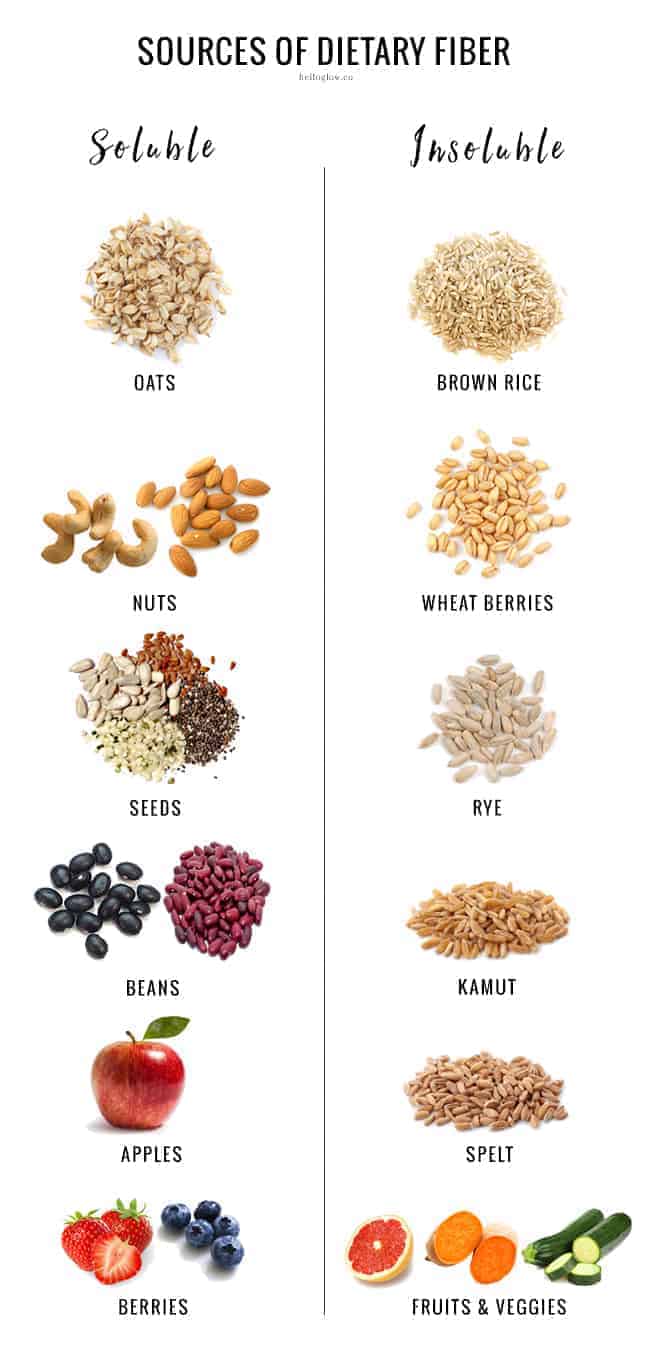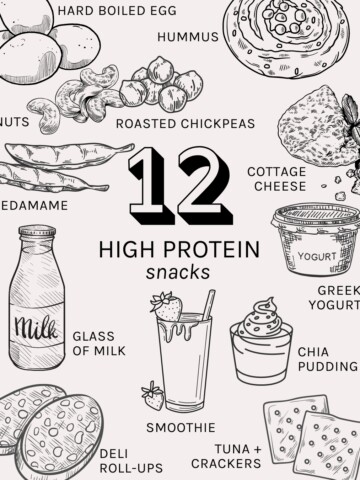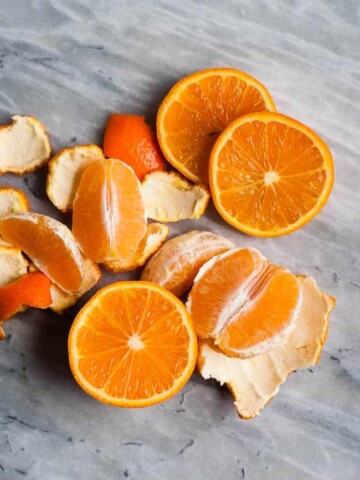At this time of year, when people tend to make changes or put new, healthier habits on their radar, I always encourage them to instill a positive message—go for more instead of less. More fruits and vegetables, more protein...and maybe those will crowd out some of the bad stuff!
Protein and healthy fats have had their turn in the sun; I think now that we have a better understanding of how plant foods protect us from disease, we should be talking about fiber! This mega important part of our daily food intake and wellness doesn't get discussed nearly enough, and I think it's time to change that.
Dietary fiber, otherwise known as roughage, is made up of indigestible long-chain carbohydrates that take the full trip right through our entire digestive tract from entry to exit—if you know what I mean.
If we can't digest fiber, what's the point of eating more of it?
Glad you asked!
Fiber is considered an essential part of health and prevention of disease. Studies have shown that adequate fiber intake protects against atherosclerotic heart disease [source] and hypertension [source], helps with weight loss [source], prevents strokes [source] and type 2 diabetes [source], lowers the risk of developing COPD [source], ovarian cancer [source], breast cancer [source], colon cancer [source], pancreatic, and gastric cancer [source], just to name a few.
This beneficial effect even goes to the brain. More recent studies have shown an association between increased fiber intake and reduced depression. A high-fiber diet, which affects the pH of the gut, is thought to be the mechanism for lowering inflammation, and that potentially improves symptoms of depression [source].
Your gut needs fiber
Then there is the newer area of focus, the gut microbiome. About 1,000 different species of bacteria live in the human colon [source]! Probiotics are a big seller now as we have learned that little critters living in our gut actually do contribute to our health. You say that’s not new, but our understanding that these guys are affected by our dietary choices has increased considerably.
Fiber plays a major role in creating a hospitable environment for the good guys, keeping the bad players at bay [source]. In comes the star of the show, prebiotics. Some fiber we eat selectively feeds good guys, so they live and grow happily in our intestines, greatly contributing to our health (and we won’t have to keep buying and taking those expensive probiotics).
This includes foods like artichokes, leeks, asparagus, garlic, onions, wheat, oats, and soybeans. One of the most significant things the gut bacteria do is not well-known to most; the microflora works with the immune system to create and strengthen the barrier that keeps disease-causing bacteria from coming in through our GI tract [source]. Amazing, isn’t it?!
More about fiber
So now that we know all of these beneficial effects our body gets from fiber, let’s get a little more into what it is and how it works to help us.
There are two basic types of dietary fiber: soluble and insoluble. Soluble fiber absorbs water, whereas insoluble fiber does not. An easy demonstration of this is adding water to some ground flax seeds or a bowl of oats.
After letting it sit for a while, you'll see the water has absorbed, and you're left with a sort of gloopy gel. That's soluble fiber in action. On the other hand, if you add water to a bowl of wheat bran, which is pure insoluble fiber, it just sits there without being absorbed.
Both soluble and insoluble fiber play important roles in our overall health.
What is insoluble fiber?
Since it doesn't absorb water, insoluble fiber is actually what we're talking about when we use the word roughage. Insoluble fiber helps move food through the stomach quickly and makes the stool bulkier to keep you regular.
It passes through the digestive tract intact, which keeps you feeling full longer. It also helps to moderate the uptake of sugar into your bloodstream, thus avoiding those big spikes and dips, keeping blood sugar levels stable.
Since it moves through your digestive tract intact, insoluble fiber is also a sort of "janitorial crew" in our intestines. It sloughs off dead cells, effectively sweeping things along and out, which also helps us absorb nutrients better. Insoluble fiber improves constipation and fecal incontinence (it can work both ways) and alleviates symptoms associated with hemorrhoids.
Good sources of insoluble fiber
Fruits and vegetables are excellent sources of insoluble fiber (especially the peel, which is why it's a good idea to leave the skin on apples, carrots, and potatoes), as well as nuts and seeds, and whole grains such as brown rice, wheat berries, rye, kamut, and spelt.
In general, processed and refined foods have been stripped of their insoluble fiber, and whole foods have the fiber intact. If you ever do any juicing, that's a whole lot of insoluble fiber you end up tossing out at the end.
What is soluble fiber?
Soluble fiber, though it does absorb water, is still not broken down in our digestive tract. This type of fiber slows down digestion. However, certain gut bacteria can use it to create short-chain fatty acids that help prevent disease.
In particular, these beneficial fatty acids stop cholesterol from being absorbed in the liver [source]. Soluble fiber also binds to cholesterol particles and removes them from the body (wow!), which reduces overall blood cholesterol levels and lowers the risk of heart disease. The soluble fiber in oats is particularly good for this.
Soluble fiber also works to keep blood sugar stable, and since it absorbs water as it passes through your system, it helps keep your stools in good shape and protects against constipation and diarrhea. In fact, most fiber supplements (such as Metamucil, made of psyllium husk) contain mostly soluble fiber.
Good sources of soluble fiber
The best places to find soluble fiber include oats, barley, and legumes, along with some vegetables (carrots, onion, broccoli, artichokes), fruits (bananas, pears, apples, berries) [source].
How much do you need?
Both soluble and insoluble fiber are an important part of a healthy diet. It’s important to know that fiber is only found in plant foods. Animal products, including meat, fish, dairy, and eggs, do not contain any fiber at all!
The American Dietetic Association recommends between 20–35 grams per day of overall dietary fiber (from food only, not from supplements), about 25 g for women and 38 g for men [source].
It’s important to note that this number was based on data related to its protection against heart disease [source], and since that is the number 1 killer of Americans and most industrialized countries, it has been well studied, making the recommendation very strong.
So how we are doing in that realm then is pretty obvious: the average American gets only about 14 grams a day—about half the amount needed to maintain good health. Time to change that number and turn this thing around!
The good news is that this is relatively easy to accomplish by eating plants! Focus on getting plenty of fruits and vegetables, nuts, beans and legumes, and healthy whole grains every day. The benefits of fiber have been put on the back burner for too long.
A new emphasis on getting adequate daily fiber intake will prevent disease, protect us from harmful bacteria, and improve our mood and sense of well-being. That’s a win!
This article was medically reviewed by Dr. Gina Jansheski, a licensed, board-certified physician who has been practicing for more than 20 years. Learn more about Hello Glow's medical reviewers here. As always, this is not personal medical advice and we recommend that you talk with your doctor.
158



